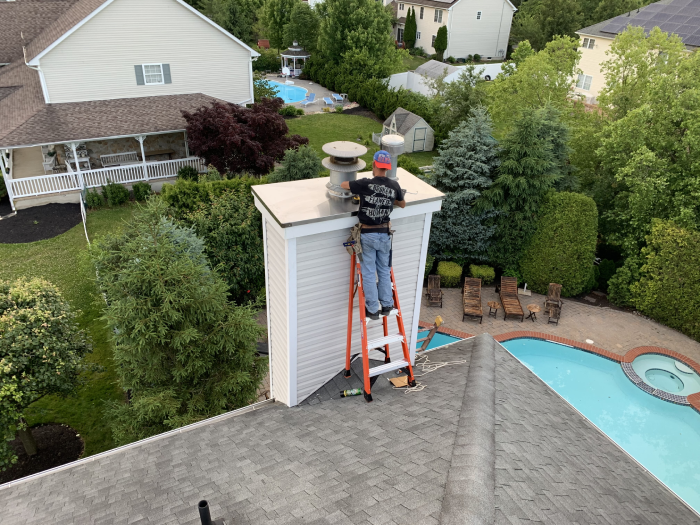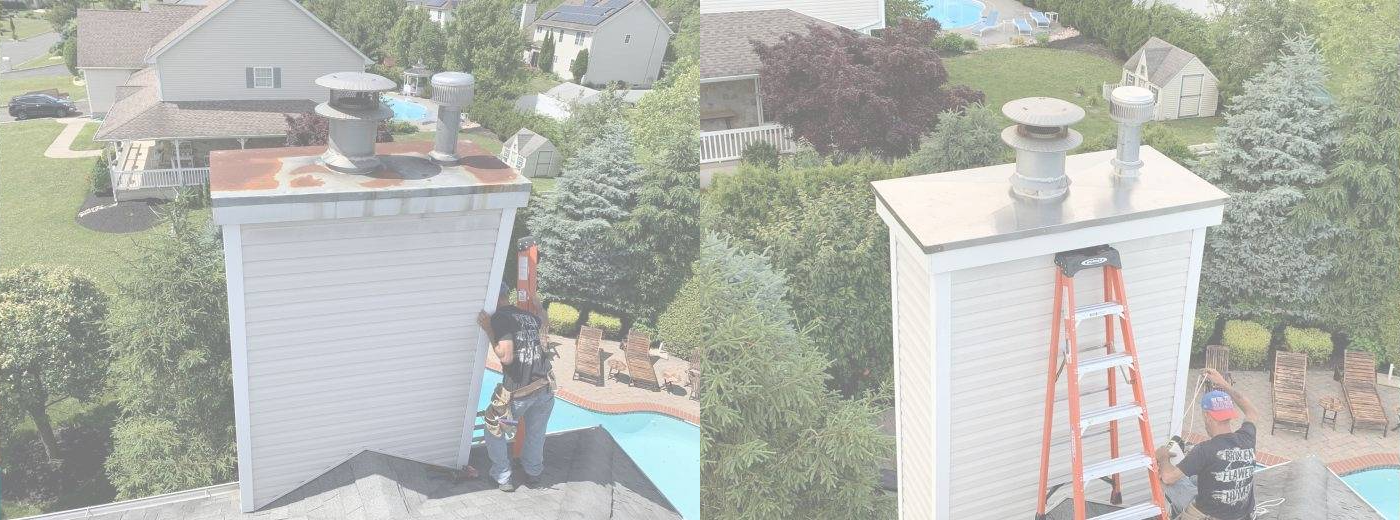Best Chimney Chase Cover Repair & Replacement in New Jersey
A home’s chimney serves an important purpose: it expels fumes, smoke, and other pollutants when occupants are enjoying the comforting warmth of a wood stove or fireplace. That’s only one of the reasons homeowners should understand the differences between a chase cover, chimney cap, and chimney crown while recognizing these parts’ roles in protecting the chimney and the home.

The Chimney Crown: A chimney crown is the uppermost level of the chimney. It’s typically composed of cement or mortar leftover from construction, and it’s the chimney’s first defense against water. When it’s properly installed and regularly maintained, the crown’s sloped surface diverts water from the chimney area.
Because of its location, a chimney crown is subject to weather-related damage. Such influences can cause the crown to crack, which allows water to leak behind the chimney bricks. If the crown damage isn’t discovered and fixed quickly, the masonry will start to soften and the crown will eventually deteriorate. While the chimney is mostly sealed by the crown, the flue is left exposed, and a crown isn’t enough to keep all debris and water out.
The Chimney Chase Cover: The housing between the chimney crown and the home’s roofline is known as the chase. This part plays a crucial role in directing burning embers and smoke away from the roof. Depending on the construction of the home, a chimney chase may be made of vinyl, metal siding, wood, or brick.
Today’s aluminum and stainless steel chase covers near me are rectangular or square caps that fit snugly onto the chase to prevent water damage. Because aluminum covers are more likely to need rusted chimney chase cover repair, particularly in areas with salty air, they should be inspected on a regular basis.
The Chimney Cap: A chimney cap works like an umbrella in that it prevents birds, small animals, debris, and rainwater from getting into the chimney flue. The cap is positioned above the crown, and it’s usually made of stainless steel mesh that allows smoke to exit while preventing everything else from entering. While many consider chimney caps to be important safety devices, these optional accessories aren’t always installed during chimney construction.
Why Chimney Caps Are’ So Important: While the crown and chase cover have vital functions, the cap is one of the most important parts of the chimney. Without a cap, the fireplace and flue are exposed to the elements, which can damage the smoke shelf, damper, and masonry. Small animals often seek shelter in exposed chimneys, and their debris may cause serious problems. When the flue is clogged, fumes can’t get out, and the home’s occupants may be exposed to smoke and dangerous levels of carbon monoxide.
Furthermore, an uncapped chimney is more likely to catch fire. With the right conditions, burning embers can be sucked out of the chimney and land on the roof. A downdraft from an open flue can force fireplace doors open, pushing ashes, soot, and smoke into the home.
Services
Customer Testimonials






